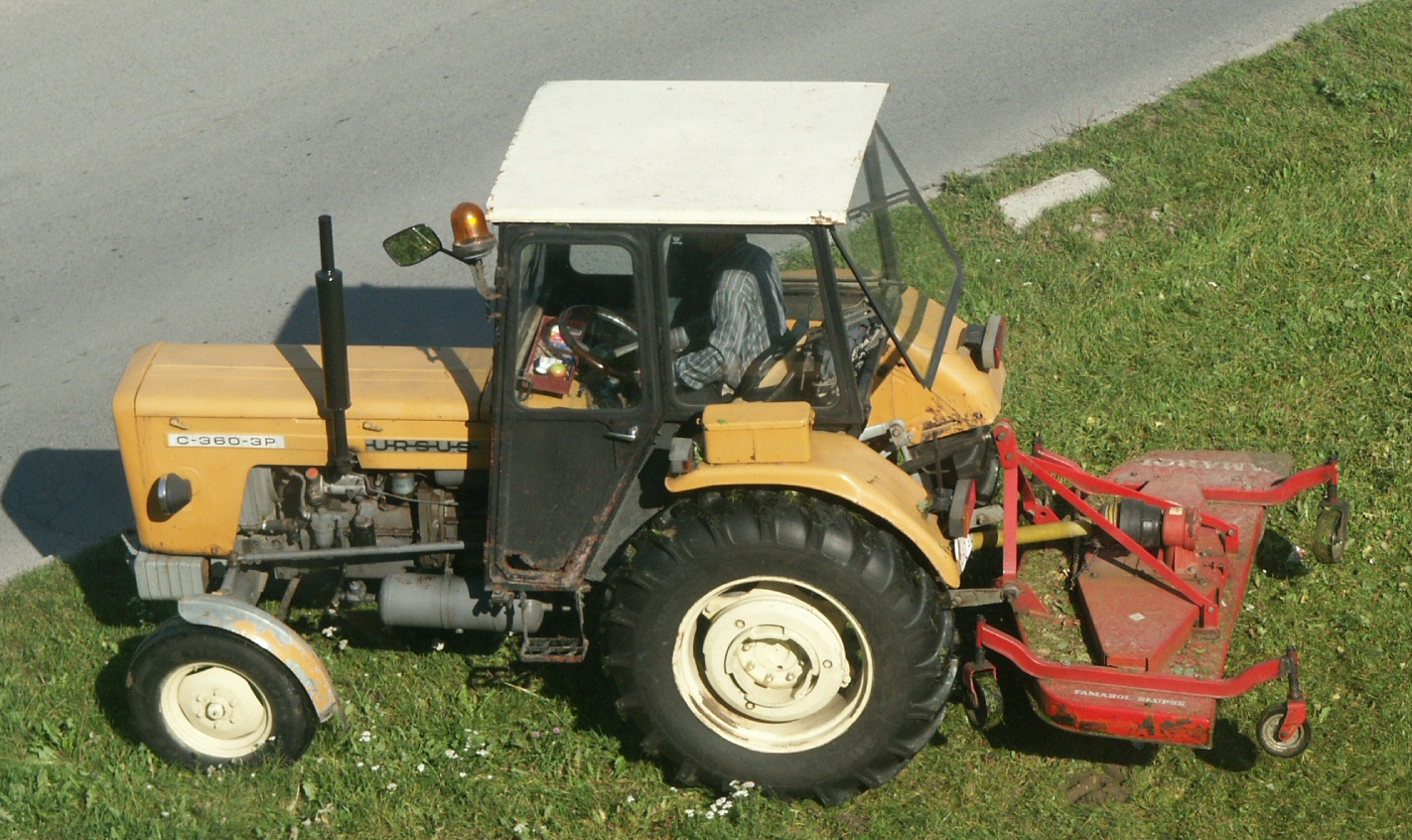|
Ploughs
A plough or plow ( US; both ) is a farm tool for loosening or turning the soil before sowing seed or planting. Ploughs were traditionally drawn by oxen and horses, but in modern farms are drawn by tractors. A plough may have a wooden, iron or steel frame, with a blade attached to cut and loosen the soil. It has been fundamental to farming for most of history. The earliest ploughs had no wheels; such a plough was known to the Romans as an ''aratrum''. Celtic peoples first came to use wheeled ploughs in the Roman era. The prime purpose of ploughing is to turn over the uppermost soil, bringing fresh nutrients to the surface while burying weeds and crop remains to decay. Trenches cut by the plough are called furrows. In modern use, a ploughed field is normally left to dry and then harrowed before planting. Ploughing and cultivating soil evens the content of the upper layer of soil, where most plant-feeder roots grow. Ploughs were initially powered by humans, but the use of farm ... [...More Info...] [...Related Items...] OR: [Wikipedia] [Google] [Baidu] |
Harrow (tool)
In agriculture, a harrow is a farm implement used for surface tillage. It is used after ploughing for breaking up and smoothing out the surface of the soil. The purpose of harrowing is to break up clods and to provide a soil structure, called tilth, that is suitable for planting seeds. Coarser harrowing may also be used to remove weeds and to cover seed after sowing. Harrows differ from ploughs, which cut the upper 12 to 25 centimetre (5 to 10 in) layer of soil, and leave furrows, parallel trenches. Harrows differ from cultivators in that they disturb the whole surface of the soil, while a cultivator instead disturbs only narrow tracks between the crop rows to kill weeds. There are four general types of harrows: disc harrows, tine harrows (including spring-tooth harrows, drag harrows, and spike harrows), chain harrows, and chain-disk harrows. Harrows were originally drawn by draft animals, such as horses, mules, or oxen, or in some times and places by manual lab ... [...More Info...] [...Related Items...] OR: [Wikipedia] [Google] [Baidu] |
Ard (plough)
The ard, ard plough, or scratch plough is a simple light plough without a mouldboard. It is symmetrical on either side of its line of draft and is fitted with a symmetrical share that traces a shallow furrow but does not invert the soil. It began to be replaced in China by the heavy carruca turnplough in the 1st century, and in most of Europe from the 7th century. In its simplest form it resembles a hoe, consisting of a ''draft-pole'' (either composite or a single piece) pierced with a nearly vertical, wooden, spiked ''head'' (or ''stock'') which is dragged through the soil by draft animals and very rarely by people. The ard-head is at one end a ''stilt'' (handle) for steering and at the other a ''share'' (cutting blade) which gouges the surface ground. More sophisticated models have a composite pole, where the section attached to the head is called the ''draft-beam'', and the share may be made of stone or iron. Some have a cross-bar for handles or two separate stilts for handl ... [...More Info...] [...Related Items...] OR: [Wikipedia] [Google] [Baidu] |
Three-point Hitch
The three-point hitch (British English: three-point linkage) is a widely used type of hitch for attaching ploughs and other implements to an agricultural or industrial tractor. The three points resemble either a triangle, or the letter A. Three-point attachment is the simplest and the only statically determinate way of joining two bodies in engineering. A three-point hitch attaches the implement to the tractor so that the orientation of the implement is fixed with respect to the tractor and the arm position of the hitch. The tractor carries some or all of the weight of the implement. The other main mechanism for attaching a load is through a drawbar, a single point, pivoting attachment where the implement or trailer is not in a fixed position with respect to the tractor. The primary benefit of the three-point hitch system is to transfer the weight and resistance of an implement to the drive wheels of the tractor. This gives the tractor more usable traction than it would otherw ... [...More Info...] [...Related Items...] OR: [Wikipedia] [Google] [Baidu] |
Welsh Language
Welsh ( or ) is a Celtic language of the Brittonic subgroup that is native to the Welsh people. Welsh is spoken natively in Wales, by some in England, and in Y Wladfa (the Welsh colony in Chubut Province, Argentina). Historically, it has also been known in English as "British", "Cambrian", "Cambric" and "Cymric". The Welsh Language (Wales) Measure 2011 gave the Welsh language official status in Wales. Both the Welsh and English languages are ''de jure'' official languages of the Welsh Parliament, the Senedd. According to the 2021 census, the Welsh-speaking population of Wales aged three or older was 17.8% (538,300 people) and nearly three quarters of the population in Wales said they had no Welsh language skills. Other estimates suggest that 29.7% (899,500) of people aged three or older in Wales could speak Welsh in June 2022. Almost half of all Welsh speakers consider themselves fluent Welsh speakers and 21 per cent are able to speak a fair amount of Welsh. The Wels ... [...More Info...] [...Related Items...] OR: [Wikipedia] [Google] [Baidu] |



